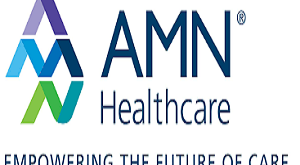Eli Lilly and Company, established in 1876, remains as one of the most seasoned and most regarded drug organizations on the planet. The company, which has its headquarters in Indianapolis, Indiana, has made a significant contribution to the advancement of healthcare by inventing life-saving medications and ground-breaking treatments. With its profound obligation to development, science, and patient consideration, Eli Lilly has contributed essentially to working on worldwide wellbeing, especially in regions like diabetes, oncology, and neuroscience. This article investigates the set of experiences, significant accomplishments, item pipeline, and difficulties that have molded Eli Lilly and Company into the drug stalwart it is today.
A Brief History of Eli Lilly & Company
Eli Lilly and Company was established by Colonel Eli Lilly, a Nationwide conflict veteran and drug specialist, who was disappointed by the insufficient and conflicting prescriptions of his time. Not entirely set in stone to change the state of affairs, he laid out his organization determined to deliver top caliber, dependable meds. His obligation to thorough logical strategies and quality control set the establishment for Eli Lilly’s future achievement.
In its initial years, Eli Lilly zeroed in on creating normalized definitions, which were progressive when the drug business was ineffectively directed. The organization developed consistently, and by the mid 1900s, it had turned into a forerunner in creating prescriptions in view of sound logical examination. The pioneering approach that Eli Lilly took included a focus on collaborating with academic institutions, which evolved into an important drug discovery strategy.
Major Milestones and Innovations
Eli Lilly has been at the forefront of medical advancements that have reshaped healthcare throughout its history. A portion of its most prominent commitments include:
Insulin Production
Perhaps Eli Lilly’s most famous achievement came in the 1920s when the company became the first to mass-produce insulin, a breakthrough that saved countless lives. At the time, diabetes was essentially a death sentence, as there was no effective treatment. After the discovery of insulin by Canadian scientists Frederick Banting and Charles Best, Eli Lilly was quick to enter into a partnership with them to produce insulin on a large scale.
This collaboration led to the launch of Iletin in 1923, making insulin available to diabetic patients worldwide. The company’s work with insulin established its long-standing leadership in diabetes care, which continues to this day.
Polio Vaccine
Eli Lilly likewise assumed a huge part in the battle against polio, an overwhelming illness that left a large number of kids deadened. The company was one of the main producers of Jonas Salk’s inactivated polio vaccine (IPV) in the 1950s. By delivering the antibody at scale, Eli Lilly helped almost annihilate the illness in the US and numerous different areas of the planet.
Mental Health and Neuroscienc
In the late twentieth hundred years, Eli Lilly moved its concentration toward tending to psychological well-being issues, another region where the organization has taken huge steps. In 1987, the organization sent off Prozac (fluoxetine), the main specific serotonin reuptake inhibitor (SSRI) energizer, which reformed the treatment of sadness and uneasiness issues. Prozac became one of the most recommended medications of now is the right time and a foundation of present day mental treatment.
Notwithstanding gloom, Eli Lilly has created medicines for schizophrenia, bipolar turmoil, and consideration deficiency hyperactivity jumble (ADHD). The organization’s neuroscience portfolio stays a vital part of its pipeline, as it proceeds to investigate and foster medicines for Alzheimer’s sickness, mental degradation, and other neurological circumstances.
Eli Lilly’s Current Portfolio and Areas of Focus
Eli Lilly’s item portfolio traverses a great many remedial regions, with specific strength in diabetes, oncology, immunology, and neuroscience. Here are a few critical areas of concentration for the organization:
Diabetes Care Eli Lilly has provided a comprehensive portfolio of insulin products and treatments for both type 1 and type 2 diabetes, remaining a leader in the field for nearly a century. As of late, the organization has presented progressed insulin definitions, like Humalog, as well as non-insulin meds like Trulicity and Jardiance, which assist with overseeing glucose levels in patients with type 2 diabetes.
Notwithstanding its ongoing contributions, Eli Lilly is vigorously put resources into creating cutting edge diabetes medicines. The organization is investigating new medication conveyance innovations, like mechanized insulin frameworks and biosimilar insulins, which plan to work on the existences of diabetes patients by giving more productive and less intrusive administration arrangements.
Oncology
Eli Lilly has taken critical steps in oncology, creating drugs that focus on a scope of diseases, including bosom, lung, and colorectal malignant growths. Key oncology items incorporate Alimta (pemetrexed), which is utilized to treat non-little cell cellular breakdown in the lungs and mesothelioma, and Verzenio (abemaciclib), a CDK4/6 inhibitor for treating bosom malignant growth.
The organization is likewise at the front of immuno-oncology, a quickly developing field that spotlights on bridling the body’s resistant framework to battle disease. Eli Lilly’s procurement of Loxo Oncology in 2019 extended its presence in accuracy medication, empowering the organization to foster designated treatments in view of the hereditary profile of growths. These advancements are furnishing patients with more customized and viable treatment choices.
Immunology Eli Lilly has focused on treating autoimmune diseases, such as rheumatoid arthritis, psoriasis, and inflammatory bowel disease, in the field of immunology. Taltz (ixekizumab) and Olumiant (baricitinib) are two of the organization’s driving immunology drugs. Taltz, an interleukin-17A inhibitor, is utilized to treat plaque psoriasis, while Olumiant is a Janus kinase (JAK) inhibitor utilized for rheumatoid joint pain.
Eli Lilly is additionally investigating novel ways to deal with treating other resistant related messes, like lupus and atopic dermatitis, further extending its immunology portfolio.
Neuroscience
Neuroscience keeps on being a basic center region for Eli Lilly, especially chasing medicines for Alzheimer’s sickness. The organization’s medication, donanemab, has shown guarantee in clinical preliminaries for easing back mental deterioration in Alzheimer’s patients by focusing on beta-amyloid plaques in the cerebrum. Whenever endorsed, donanemab could be a unique advantage in the treatment of Alzheimer’s, a condition that as of now influences a great many individuals around the world.
Notwithstanding Alzheimer’s, Eli Lilly is effectively exploring therapies for conditions like persistent agony and headache, meaning to address the neglected requirements in nervous system science.








